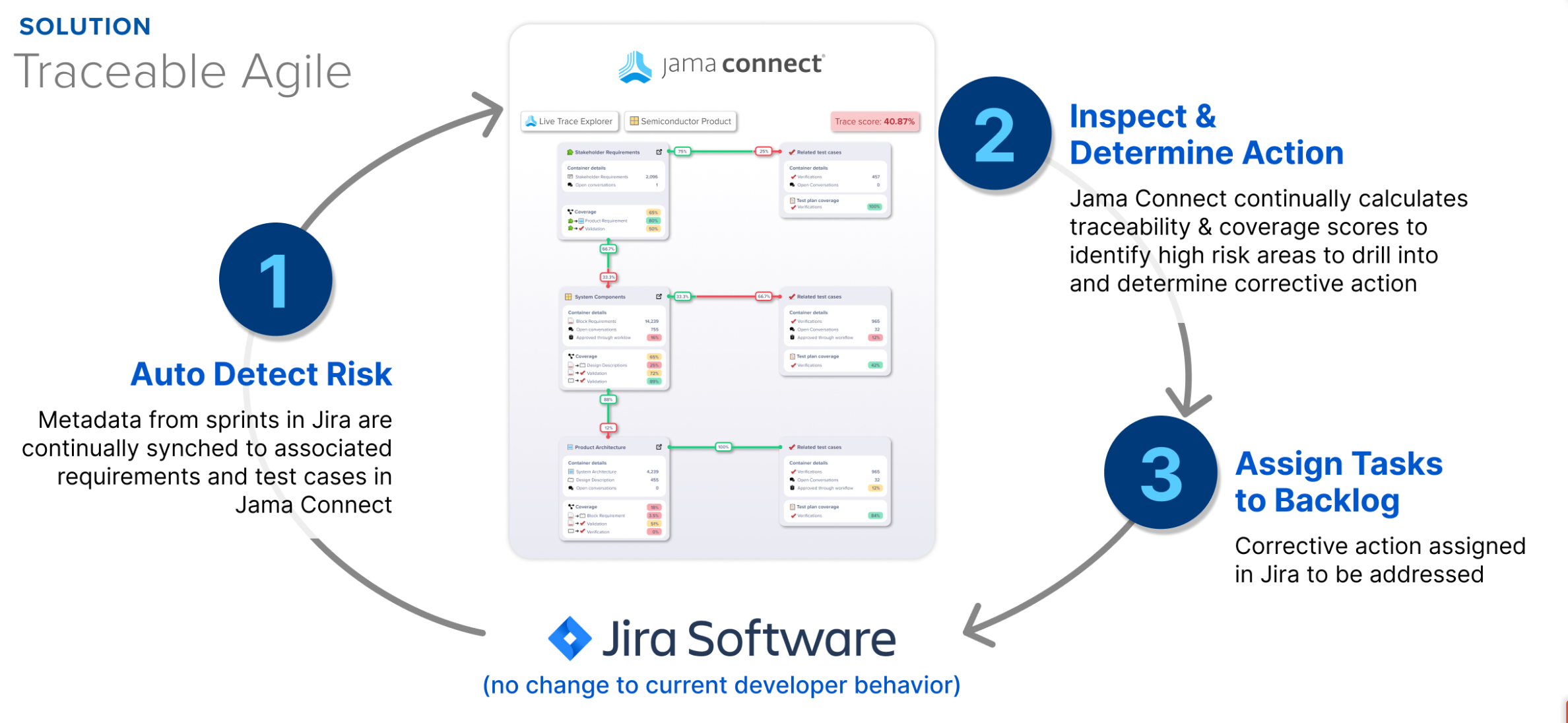Traceable Agile – Speed AND Quality Are Possible for Software Factories in Safety-critical Industries
Automotive, aerospace and defense, and industrial companies have largely adopted Agile within rapidly growing software factories to speed time to market in order to stay competitive. These software factories have largely succeeded in speeding up software development for companies within the industries that have adopted it, but maintaining quality is still a key concern. The inability to coordinate development across engineering disciplines has led to product recalls, quality complaints, and has created significant internal challenges to satisfy functional safety requirements from regulators and confidently deliver high-quality software. These challenges — and resulting outcomes — are often so severe that leadership of the software factories have been let go.
Fundamental Questions We Hear
When we ask software factory leaders, “what keeps them up at night?” We consistently hear the following five questions:
- How do I know which product requirements have been missed?
- How do I know which product requirements are not fully covered by test cases?
- How do I know which product requirements have failed to pass tests?
- How do I identify rogue development activity?
- How do I know if changes have been made at the system and / or hardware level that impact the software team?
These are fundamental questions that should be answerable from leading Agile tooling, but they are not. The reason is that Agile tools focus on tasks (define, assign, status, complete, delete) and have no notion of the current and historical state of the project. Tasks are not tied to any state of the project which often leads to drift from the actual needs and requirements of your customer or end user. As a result, these questions are not answerable with Agile tools like Jira and Azure DevOps. Project management tools like Jira Align answer important questions around staffing, sprint planning, and cost allocation, but do not address the critical questions above focused on the real-time state of the software development effort against the approved requirements.
RELATED: What is a Scaled Agile Framework (SAFe) and How Does it Help with Complex Software Development?
The Answer? Traceable Agile.
How do you best speed software and overall product development and still achieve the quality expectations of customers and company leadership? The answer is Traceable Agile. Traceable Agile speeds the FLOW of software development but also maintains the current and historical STATE of the development effort and auto-detects issues early in the software development process. Traceable Agile recognizes that developer activity is best managed as a FLOW using tasks in a tool such as Jira. What is needed to achieve Traceable Agile is to pair a system with Jira that manages the STATE of the development effort at all times. By keeping STATE and FLOW tools separate but integrated, no change is required to software developer process and tools. This is significant. Software leadership can now answer their critical questions without having to undergo a major process and tool change with resistant developers which would slow down development and/or increase staff attrition.
RELATED: How to Achieve Live Traceability™ with Jira® for Software Development Teams
So how does Traceable Agile work in practice?
Here is an overview and diagram of Jama Connect® maintaining the STATE of development activity and Jira providing the FLOW.
- Task activity continues as normal in Jira and risk is auto-detected in Jama Connect by comparing all user stories and bugs in Jira to the expected development and test activity for each requirement in Jama Connect.
- All exceptions are identified —the ones that answer the questions that keep software factory leadership up at night — such as requirements with no user stories, user stories with no requirements, requirements with no test cases or test results, etc.
- After the exceptions are inspected in Jama Connect, management can take action and assign corrective tasks in Jira as just another task in the queue for a developer.
RELATED: Extending Live Traceability™ to Product Lifecycle Management (PLM) with Jama Connect®
This is a fully automated process that leverages automated synchronization of meta data between Jira and Jama Connect via Jama Connect Interchange™. The only metadata that needs to be synchronized from Jira to make Traceable Agile possible is as follows: ID, Created Date, Creator (User), Modified Date, Modifier (User), Title, Status, Link (URL), Relationships. On inspection in Jama Connect of an issue, one simply clicks on the link to go to Jira if more information is required to diagnose.
Many of our leading clients have already implemented Traceable Agile and are significantly improving their Traceability Score™ which we have demonstrated leads to superior performance on quality metrics in our Traceability Benchmark Report.
Feel free to reach out to me to learn more and I will respond.
RELATED: In this video, we will demonstrate and discuss Traceable Agile™
and how speed and quality make software factories and safety-critical industries possible.

